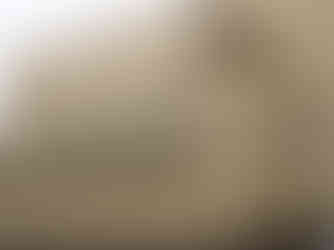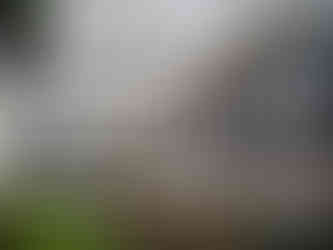La Cité Internationale Universitaire de Paris
- EG-xiste

- May 17, 2021
- 12 min read
True architectural tower of Babel
The Great War is over and its trauma reinforced pacifist ideals. The housing crisis in Paris is a reality. In response to this, the concept of a university campus begins to germinate, with the ambition of offering a quality welcome to students from all over the world and promoting mixing and cultural exchanges.
The founding fathers
Paul Appell , French mathematician, normalien, occupies an important place within the French university. President of the French Association for the League of Nations, he is also the inspiration for this pacifist dimension desired for this city.
Emile Deutsch de la Meurthe , an oil industrialist, came from a modest family. But he is known for his philanthropy and his role in helping with post-war reconstruction. He is, with his brother Henri, one of the great patrons of the Third Republic. He will respond enthusiastically to Paul Appell's request by financing the construction of the first housing complex in the City.
André Honnorat , Minister of Public Instruction and Fine Arts, great defender of the intellectual influence of France abroad, is also a convinced pacifist. He will be president of the university campus from 1925 to 1948.
The birth
Long negotiations begin to find the financing and the favorable ground for construction.
A plot of 27 hectares is chosen, it is located near the Parc Montsouris in the south of Paris. The capital indeed has the space necessary for the realization of such a project, with the enclosure of Thiers , its bastions and barracks which have surrounded the capital since 1845 and which many wanted to see disappear.
In 1921, an agreement was signed authorizing the creation of the university campus, destined to become the epicenter of a young international intelligentsia.
Then began the development of this garden city under the leadership of the chief architect Lucien Bechmann , the landscape designer Jean Claude Nicolas Forestier , then Léon Azéma .
We find there the planning principles of the American campuses of the time, a park divided into distinct spaces, a large central lawn and sports facilities on the outskirts of the place.
In 1923, the first stone of the city was laid. In the spring of 1925, the " Fondation Emile Deutsch de la Meurthe " emerged from the ground.

The rise
Responding to the call of the founding members, many foreign governments in turn get involved in the construction of their residences.
Thus from 1927, more than half of the domain was equipped, it quickly appeared necessary to think of an expansion of the domain to respond favorably to foreign requests which keep coming (Spain, Italy, Brazil, Greece, United States, etc.).
The city reached its maximum development, with more than 40 ha following three successive expansions.
Sleep and new impetus
The city then remained dormant during the Second World War and the financial and economic difficulties that followed it, before resuming a new boom in the early 1950s.
It is amputated of part of its domain with the creation of the ring road.
A new impetus has been underway since the beginning of the 2000s, with rehabilitation or construction projects within its domain or outside the walls.
And now let's explore the pavilions, foundations and houses of the university campus, through my subjective choices.
The Deutsch de la Meurthe Foundation
Lucien Bechmann - 1925
Honor to the first ensemble built and completed in 1925, in a picturesque and medieval regionalist style heavily inspired by British garden cities and colleges such as Oxford.



The set consists of seven pavilions positioned around a courtyard garden and the main building is dominated by a belfry. Materials used, stone and brick, slate on the roof.
Overall, gable roofs and corner turrets, mullioned windows and bow windows
The buildings are linked together by covered pergolas.
The Biermans-Lapôtre Foundation
Armand Guéritte - 1927
One of the oldest and most imposing houses in the city, it was built under the direction of the chief architect of the French government, Armand Guéritte .
It is thanks to the financial support of the businessman Jean-Hubert BIERMANS and his wife Berthe LAPÔTRE that this achievement was erected with the objective of welcoming Belgian and Luxembourg students. Here is therefore a classic monumental building which here and there recalls the Flemish tradition with its corner turrets and its simple curved gables.



House of the National Institute of Agronomy
René Patouillard-Demoriane - 1928
This house was built under the direction of architect René Patouillard-Demoriane , known to be one of the actors in the reconstruction of regions devastated during the Great War as well as many administrative buildings. It is the first school house for engineering students in the university campus. In 2007, it became the Maison Internationale AgroParisTech.

The sober and elegant Art Deco facade
House of Armenian Students
Léon Nafylian - 1930
We owe this house to the philanthropist Boghos Nubar Pasha , very involved in helping the victims and survivors of the Armenian genocide during the Great War. Attached to rebuilding a decimated Armenian elite, he became the main patron of the House and called on the architect Léon Nafylian for its realization. The house is also called the Marie Nubar Foundation.

There is an architecture of medieval inspiration with its arches with double column, its friezes with foliage, and its plant and animal motifs.
Southeast Asian Student House
Pierre Martin and Maurice Vieu - 1930
In 1930, this house called Maison de l'Indochine , wanted to be a synthesis between the lights of the metropolis and the Annamese tradition, against a background of paternalistic spirit at the time of colonial France. It was renamed in 1972, House of Southeast Asian Students .
The success of the architects was to know how to combine the obvious demand for Asian inspiration for the architecture of this house and the respect for the conditions of comfort offered to the students.
The buildings of Southeast Asia of the time were often low constructions, often of wood and simply consisting of a ground floor. Here, the building refers more to Western colleges in the lines and mass, but the decor here and there evokes the Indochinese atmosphere.

The Vietnamese inspiration can be seen everywhere on the facade. Large overhanging roofs with angles that rise like a dove-shaped beak, garlands and glazed sandstone macaroons that run along the facade are symbols of longevity and happiness. The vividly toned bas-relief and mosaic dragon is inspired by the Huang-Lung Pagoda.

Hellenic Foundation
Nicolas Zahos - 1932
Nicolas Politis , Greek lawyer and diplomat, Ambassador of Greece in France, is the promoter of this foundation which was financed by pan-Hellenic subscription in Greece and more particularly by Francophile circles.

This achievement is the work of architect Nicolas Zahos, it is inspired by the architecture of ancient Greece with its monumental porch and its four Ionic columns that evoke the Acropolis.
The entire facade is decorated with pilasters and decorative friezes in the spirit of the Art Deco period.


Cuba House
Albert Laprade - 1933
Pierre Sanchez Abreu jurist, although born in Neuilly-sur-Seine, his family of Cuban origin belongs to the rich environment of the sugar industry. He will finance with his sister the construction of this Cuban house better known as the Abreu de Grancher Foundation , named after his aunt and her husband, a close collaborator of Louis Pasteur.
The construction was entrusted to the architect of the civil buildings and national palaces of the time, Albert Laprade , known for the construction of the Palais de la Porte Dorée.
Here we discover a Spanish colonial-style building, inspired by Havana Cathedral.


Swiss Foundation
Le Corbusier - 1933
It is under the impetus of the Swiss mathematician Rudolf Fueter that the Swiss Foundation owes its construction. This eminent scientist obviously calls on one of the masters of the modern movement, Charles-Edouard Jeanneret associated with his cousin Pierre.
This pavilion is the first modern achievement of the Cité Universitaire and one of the most significant of the interwar years.
We therefore find the application of its main principles of new architecture - pilings, independent framework, free plan and facade and roof gardens.

The house is suspended, far from the ground, the garden slips under the house.
Metal-framed building supported by 6 reinforced concrete pillars that descend to a depth of more than 19 meters.
Double row of pilings freeing the ground floor. The posts are set back from the facades. They carry a concrete slab on which rests the metal framework of the 3 floors of housing. These are all facing south.
Floor plan and free facade, they are no longer dependent on load-bearing walls.
Banner windows.
Reinforced cement revolutionizes the architecture of openings. The absence of load-bearing wall makes it possible to design large window bands that run along the facade.

This achievement can be considered as the prototype of bar-shaped dwellings.

Classified HM since 1986.
House of the Provinces of France
Armand Guéritte - 1933
Originally this project was called Maison de l'Alsace , we owe it to Murry Guggenheim , son of the industrialist Meyer Guggenheim , philanthropists from father to son - Solomon Guggenheim initiator of the foundation of Modern and Contemporary Art. The name of this house, linked to the donation of an anonymous Alsatian, will change its destination and name to become the House of the provinces of France, place of reception of the students - "some of the best among the best of the sons from each of the French regions ". Local authorities in France will participate in the financing of the project.

This imposing brick construction is built in the shape of a U. It dominates the western part of the city and the building has an imposing entrance framed by two arches. The facade is decorated with the 36 shields of the French provinces.

Franco-British College
Pierre Martin and Maurice Vieu - 1937
Testimony of Franco-British friendship after the Great War, this building was financed by the French state and the Franco-British couple Edward and Helen Nathan .
Built in the purest classic pre-war English style, the buildings combine sobriety and elegance. Its red brick facade, its turrets and bow windows help to make the whole less massive.

The Dutch College
Willem Marinus Dudok - 1928-1938
One of the most beautiful buildings in the university campus, this major work is the only achievement in France by the Dutch architect Willem Marinus Dudok , a true standard bearer of avant-garde international-style architecture of the 1930s.
Its construction will be made possible thanks to the donation of the patron Abraham Preyer, collector and art dealer, in memory of his son who died during the Great War.

Everything here revolves around geometric formalism with interlocking volumes and spaces, a real play of masses without exterior decor. We note in this realization a certain influence by the work of Frank Lloyd Wright and the Stijl movement.
Similarity with one of his other achievements, the Hilversum city hall, the same asymmetrical composition of blocks, the presence of a campanile and window bars.
The building consists of four main wings. The building is intended to be functional, it is lit by a multitude of horizontal bays and large windows in bands.
Classified HM since 2005
Lucien Paye Foundation
Jean Vernon, Bruno Philippe and Albert Laprade - 1951
Former flag of Overseas France, the residence changed its name following the independence of African countries, to become the Lucien Paye Foundation , academic, diplomat then minister of national education, it played a non-partisan role. negligible in the creation of African universities.
The building has a classic style in the spirit of Auguste Perret with ornamentations of resolutely African inspiration.

We owe the sculpted pillars of the entrance to Pierre Meauzé , the bas-reliefs of the facade to Anna Quinquaud . They are obviously from another era and mark a certain vision of Africa, that of the 1950s, deeply out of step with the present.
The house of Mexico
Jorge L. and Roberto E. Medellin - 1953
Very inspired by the modern movement, this building is composed of two parallel bars connected to each other by a free-form intermediate-sized wing, dedicated to collective rooms.
The set is completed by a garden patio.


A Mayan-inspired stone bas-relief decorates one of the facades. It refers to the discovery of Mayan paintings at the archaeological site of Bonampak.

Brazil house
Le Corbusier and Lucio Costa - 1957
At the request of the Brazilian government, the sketch project was entrusted to the Brazilian architect Lucio Costa , but the latter entrusted Le Corbusier with the implementation and direction of the construction. But Le Corbusier made important modifications to the basic project and his collaboration with Lucio Costa became tense and conflictual, leading to the withdrawal of the Brazilian architect.
However, this achievement is recognized by all as a major work of modern architecture.
The pavilion is built of concrete and has three main buildings. A longitudinal block on five levels which rests on a platform supported by six large pillars, a trapezoidal block on a single level and finally a wing with an inclined roof.
And of course the characteristics of the architecture of the master of the modern movement are everywhere present - residential bar, floor on pillars, glass panels, polychromy ...

East facade, the director's accommodation is located in the building with the sloping roof.

Polychromy of the platform. The language of color.
Some would say that this Brazilian House is just an ultra brutalist residential bar, that's without counting the polychromy of the loggias, the result of a collaboration with his friend Fernand Léger , and the stained glass windows in the hall of entrance that iridescent concrete.
Le Corbusier considered color as an element of balance to magnify white and make the skin "quiver" of his beloved concrete.
His favorite colors are those of the Modernists , De Stijl and others, before this period in the 1930s, he used softer colors, visible today in his purist villas such as Maison La Roche in Paris for example.
But unlike the Dutch movement, the color here is not used to avoid confusion between equivalent walls but rather to reveal the character of each wall.

Different paths around a ground floor with a complex organization, the majority of which is dedicated to common areas, offices, meeting rooms, library.

The two wings are connected under the building by a curvilinear passage which acts on the inside as an intermediate space, and on the outside as a boundary for the outer arches.
Carved frescoes in the hall of the pavilion.

West facade

East facade on Pierre de Coubertin avenue

The Maison du Brésil is the perfect witness of an architecture in total control, a real lesson of unity on the basis of assemblage of elements however disparate.
Classified HM since 1985
The house of Cambodia
Alfred Audoul - 1957
Inaugurated in 1957 after independence, it was built with funding from the country's royal government in 1950. The house was closed and abandoned in 1973 following violent clashes between residents while the civil war in Cambodia was raging. rage.
Rehabilitated in the early 2000s, it reopened in 2003.
This building of classical U-shaped architecture, is adorned with decorative elements Khmer elements inspired by the temple of Angkor Wat.

The house of India
J.M Benjamin, H.R. Laroya and Gaston Leclaire - 1968
We are now in the era of the sixties, and this achievement is not without interest. The sobriety and rigor of this bar are enlivened by a colored facade, ocher colors for the panels and green for the balconies. The symmetry of the latter deliberately disrupts that of the whole.

But also…
Danish student house
Kaj Gottlob - 1932
Nordic neoclassicism with this sober and rigorous realization of the Danish architect Kaj Gottlob . This foundation owes its existence thanks to a strong financial participation from the Danish state and the involvement of the Danish industrialist Benny Dessau , president of the Tuborg breweries.
College of Spain
Modesto López Otero - 1935
Entirely financed by the Spanish state, the site of this construction is entrusted to the architect Modesto López Otero who built the University City of Madrid. This building is inspired by the Palace of the Duke of Alba in Salamanca, the Monterrey Palace.
In the small garden which surrounds it is a copy of the bust of the Lady of Elche , the original which is kept in the Prado Museum is in limestone and dates from the 4th century BC. Discovered in 1897, it is at this day the most famous and important archaeological fragment of the Iberian culture.
Italy House
Piero Portaluppi - 1958
An evocation of the old Italian houses in this house in Italy. Against a background of sobriety of the building are deposited here and there several antique references. The entrance porch is from the 15th century, the twin windows from the 14th century. Elegant arched loggia.

Avicenna Foundation
Claude Parent, André Bloc, Moshen Foroughi and Heydar Ghiai -1969 (former House of Iran)
Elle longe le boulevard périphérique parisien et reste accessible sur un seul côté de la cité It runs along the Parisian ring road and remains accessible on only one side of the university campus. On a cramped site, this building is a complete break with the others. It is made up of two enormous residential caissons of four floors each, supported by three monumental steel porticos over 38 meters high. Closed for several years, it is being rehabilitated for a possible reopening in 2021.
Korea House
Ga.a architects and Canale 3 - 2018
The Korea House is the first country house built since 1969 in the City.
Its construction was entrusted to a group of Franco-Korean architects.
Here no choice of picturesque facade of traditional Korean architecture, but a contemporary achievement.
We have come to the end of this partial overview of the architecture of the Houses and Foundations of the Cité Internationale Universitaire de Paris.
It brings together very eclectic architectures, regionalist, traditional styles - with more or less inspiration - but some iconic achievements that have marked contemporary architecture. I am thinking particularly of the Dutch College , of the Swiss Foundation , of the House of Brazil , of Mexico and of the Avicenna Foundation .
The architectural concepts of these buildings are still judicious today, altered simply by technical upgrades imposed by today's standards.
The presence of green spaces also makes it possible to isolate the buildings a little from each other and thus avoid the impression of a universal exhibition.
After a long period when the construction of new houses was at a standstill, the Cité Universitaire left with a new dynamism. Indeed, after an initial restoration work on existing buildings, it aims to accommodate 10 new houses by 2025. A Foundation from China will soon mark the arrival of a second country since 1969, after that of South Korea .
Hoping to meet you for a second episode dedicated to interiors when the situation allows.
Thank you.
Find out more...
Parcours du patrimoine no354.
Editions NORMA.
Editions Oeil d'Or.
Editions universitaires européennes
Journal IDEAT.
Editions Greenwood
Editions Birkhauser
Catalogue de l'exposition dans la villa "Le Lac" (Corseaux Suisse)
Editions L'Oeil d'or






























































































































































Comments